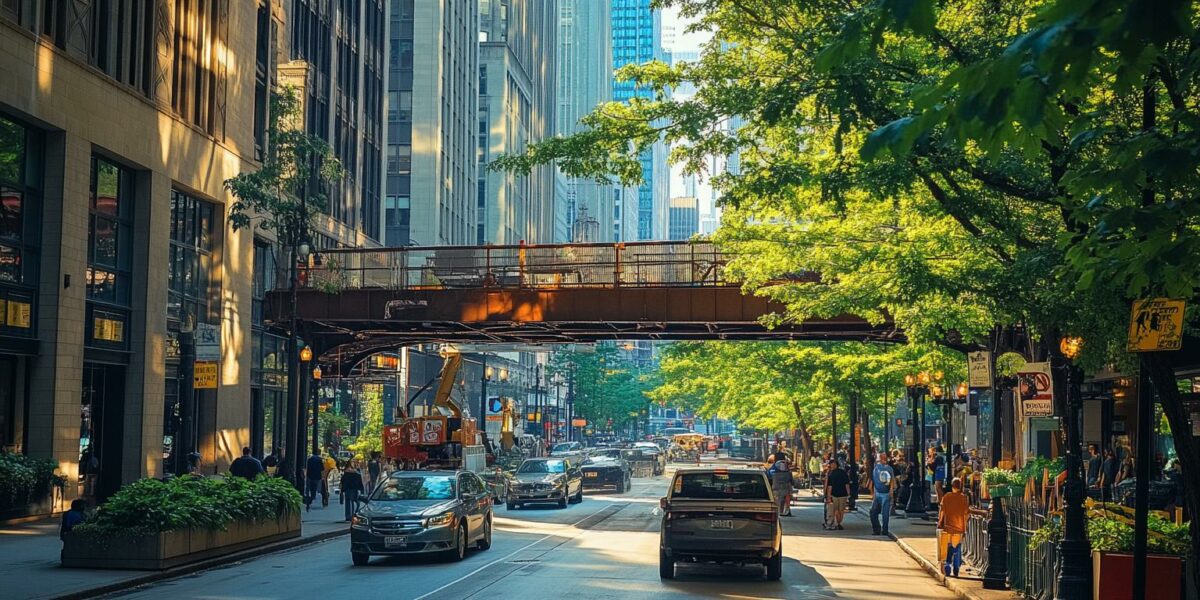Chicago’s Climate Challenges and Adaptation Efforts
Experts have determined that true “climate havens” are not naturally occurring but must be actively created through strategic planning and infrastructure. The city of Chicago, often perceived as less vulnerable to extreme climate events, is confronting increasing heat and precipitation issues.
Summer 2024 showcased unprecedented temperatures, pushing the city’s infrastructure and public health systems to their limits. With predictions indicating a rise in days exceeding 90°F, Chicago is bracing for more frequent and intense heat waves.
Analyzing the climate resiliency of cities, Architectural Digest’s 2024 report placed Chicago in the middle range among 50 U.S. cities. The city’s climate preparedness and structural factors were key contributors to this ranking.
Recent data from the 2008 Climate Change and Chicago report suggests a significant increase in high-temperature days by the end of the century, highlighting the urgency for robust adaptation measures.
Community-Driven Green Initiatives
The Chicago Department of Public Health (CDPH) is spearheading green and gray infrastructure projects to mitigate health impacts. One notable effort is the Our Roots initiative, which aims to increase tree canopy coverage in vulnerable communities.
Our Roots is a collaborative project involving over 50 organizations, including city government, nonprofits, and social-environmental equity groups. This initiative is crucial for addressing historic disinvestment and creating sustainable urban environments.
Since its inception in 2022, the project has been instrumental in planting trees across the city, aiming to reach 75,000 trees within five years. Although progress is notable, experts emphasize that tree planting alone isn’t sufficient to combat climate challenges.
Additional measures include:
- Developing a heat vulnerability index
- Implementing public cooling centers
- Deploying air-conditioned buses
Flood Management and Infrastructure Upgrades
Chicago’s aging sewage system faced a severe test in July 2023, with record rainfall overwhelming the infrastructure and causing widespread flooding. The Metropolitan Water Reclamation District (MWRD) has been proactive in advancing stormwater management projects to address these challenges.
MWRD’s Space to Grow initiative transforms schoolyards into green spaces, enhancing water storage capacity and providing educational opportunities. These green schoolyards can store significant amounts of water, mitigating flood risks.
On the gray infrastructure front, the Tunnel and Reservoir Plan (TARP) aims to increase rainwater storage capacity. The completion of the McCook Reservoir’s second stage will add an additional 6.5 billion gallons of storage, crucial for managing future storm events.
Despite these efforts, MWRD acknowledges that a combination of green and gray infrastructure solutions is essential for effective flood management. They continue to explore innovative approaches to enhance climate resilience.
Equitable Climate Action and Future Goals
The 2024 Priority Climate Action Plan, released by the Chicago Metropolitan Agency for Planning (CMAP), sets forth ambitious goals for emission reductions, economic growth, and quality of life improvements. This plan emphasizes equitable investments to ensure all communities benefit from climate adaptation efforts.
Chicago’s commitment to climate resilience is evident in its multifaceted approach, from enhancing green spaces to upgrading critical infrastructure. The city is working diligently to balance immediate needs with long-term sustainability goals.
While predicting the exact nature of future climate events is challenging, Chicago’s proactive measures aim to create a robust framework for addressing climate impacts. The focus on innovation and community engagement is key to the city’s strategy.
As climate change continues to pose significant challenges, Chicago’s ongoing efforts will determine its ability to adapt and thrive in an uncertain future. The city’s comprehensive approach serves as a model for other urban areas grappling with similar issues.



mia
I’m all for climate action, but can we really rely on these measures to prevent future disasters?
Autumn
Is this going to mean higher taxes for residents? Always a hidden cost somewhere.
MariahSerenity
75,000 trees in five years? That sounds ambitious but also amazing. 🌴
evanbeacon
Can someone explain how green and gray infrastructure differ? This is all new to me.
Evan_Horizon4
Thanks for sharing this! It’s reassuring to see such proactive measures being taken.
Leah
LOL, climate havens sound like something out of a sci-fi movie. Are they serious?
wyatt
Chicago’s really stepping up! 🌳 Keep it up!
pipervoyager
Great article, but I’m curious, how will they ensure equitable distribution of these green initiatives?
SilasAstral
Wow, this is intense! Does anyone know how much this project is costing the city?